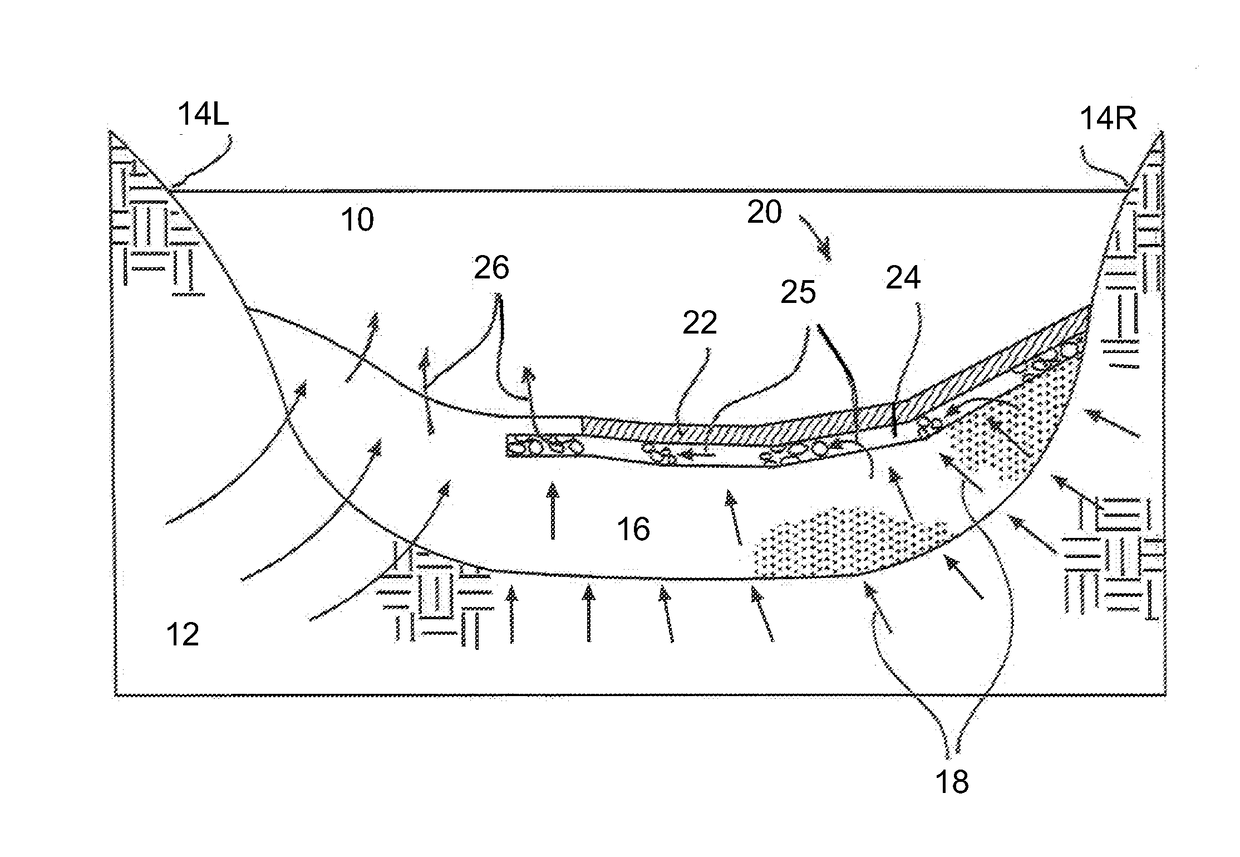Self-Regenerating Remediation Treatments and Methods
a self-regeneration and remediation treatment technology, applied in the field of self-regeneration remediation treatment and methods, can solve the problems of limited sorptive capacity and present ecological or human health hazards, and achieve the effects of reducing risk, prolonging the life of the treatment system, and enhancing microbial activity
- Summary
- Abstract
- Description
- Claims
- Application Information
AI Technical Summary
Benefits of technology
Problems solved by technology
Method used
Image
Examples
Embodiment Construction
[0019]As used in this disclosure, certain acronyms and terms have the meanings ascribed below. The term “AB” means AquaBlok®, one example of an impermeable layer of a sediment capping system. The term “AG” means AquaGate™, one example of a permeable layer of a sediment capping system. The term “BB” means Blended Barrier™, which is a blend of an AquaBlok® impermeable barrier and aggregate rock.
[0020]The term “RCM” refers to a REACTIVE CORE MAT®, or a structural, hydraulic, and functional equivalent thereof. The term “MM” refers to a TRITON® marine mattress system, or a structural, hydraulic, and functional equivalent thereof.
[0021]The term “GG” means a geogrid and the term “NWGT” means a non-woven geotextile, as each of these is further described herein.
[0022]The term “GM” means a geomembrane. The term “GCL” means a geosynthetic clay liner. The term “GM-GCL” is understood in the context of this disclosure to mean a geomembrane-supported geosynthetic clay liner.
[0023]The term “dayligh...
PUM
 Login to View More
Login to View More Abstract
Description
Claims
Application Information
 Login to View More
Login to View More - R&D
- Intellectual Property
- Life Sciences
- Materials
- Tech Scout
- Unparalleled Data Quality
- Higher Quality Content
- 60% Fewer Hallucinations
Browse by: Latest US Patents, China's latest patents, Technical Efficacy Thesaurus, Application Domain, Technology Topic, Popular Technical Reports.
© 2025 PatSnap. All rights reserved.Legal|Privacy policy|Modern Slavery Act Transparency Statement|Sitemap|About US| Contact US: help@patsnap.com


